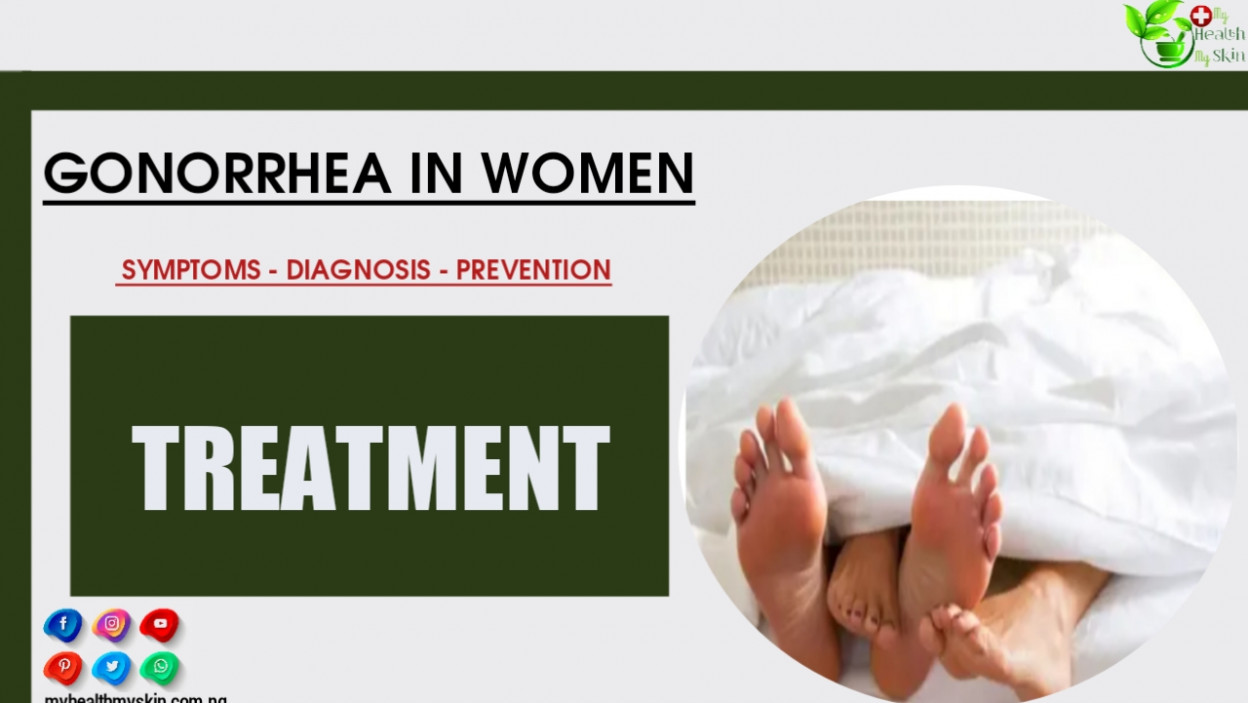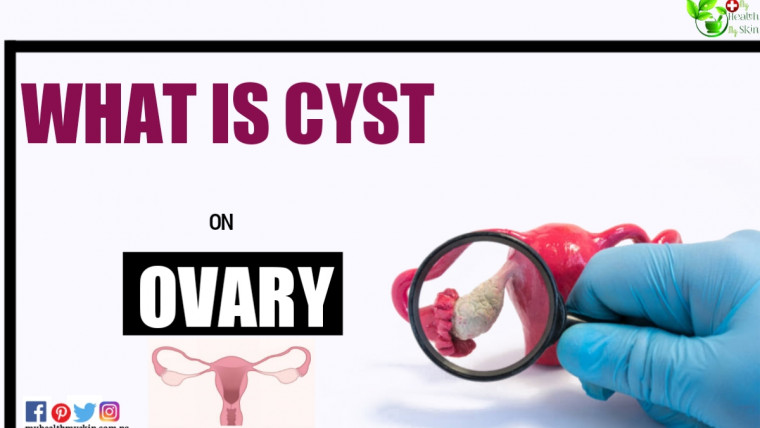Gonorrhea is a sexually transmitted infection. It is caused by gonococci of the genus Neisseria. The literal translation of the disease is “semen flow.” It does not reflect the essence of the disease, but has overshadowed terms such as “tripper”, “blennorrhea”, “gonorrhea”.
Gonorrhea has been known for centuries. However, it was not until 1879 that the German scientist Neisser discovered these microorganisms that cause purulent inflammation in the urethra. Since then, gonorrhea has been considered a free disease.
Keep on reading to get more information about the following topics related to Gonorrhea: causes, Gonorrhea in women symptoms: all you need to know, diagnosis, prevention and treatment.
[lwptoc]
Causes And Mechanism Of Development Of Gonorrhea
Gonorrhea is a sexually transmitted infection. Its perpetrators are called gonococci. These bacteria are small, round in shape and well colored with aniline dyes. In the acute phase of the process, the secreted pus contains large amounts of gonococci, which are easily detected by microscopy.
In the chronic course of the disease, there is less secretion, and the causative agent is rarely found. Additional diagnostic methods are used to determine it.
Under unfavorable conditions, gonococci become L-shaped, which are not able to reproduce, but are resistant to the harmful effects of the environment.
These forms penetrate deep into the mucous membrane, forming a chronic source of infection.
Some gonococci synthesize an enzyme called penicillinase, which neutralizes the effects of antibiotics from the penicillin series.
As a result, the microbes become resistant to the drug. This is one of the main problems of modern medicine due to the irrational use of antibiotics in the treatment of various diseases.
Gonococci are destroyed outside the human body very quickly under the influence of dry, heat, cold, antiseptics.
Infection of a woman occurs when she is sick or healthy, but has sexual intercourse with a man. Both regular and oral and anal sex are dangerous. In this case, the rectum, tonsils, oral cavity and nasal mucosa may be damaged.
Girls can be infected by using common towels and clothes. Conjunctivitis develops when gonococci appear.
Cellular and humoral immunity is activated in gonorrhea. However, they do not save the body from re-infection.
Patients are often re-infected both after recovery (reinfection) and when gonococci remain in the body (superinfection).
This is due to the fact that gonococci change the body’s resistance, and re-infections occur easily and quickly.
There may be cases of familial gonorrhea, the cause of which is found in both men and women, but does not cause serious clinical changes. Acute illness develops when any of them comes in contact with “foreign” gonococci of another partner.
In women, gonorrhea occurs in the following forms:
- Cervicitis (inflammation of the cervical canal);
- Cystitis (inflammation of the bladder);
- Urethritis (inflammation of the urethra);
- Vulvovaginitis (inflammation of the uterus and vulva);
- Inflammatory diseases of the pelvic organs – endometritis, salpingo- oophoritis, proctitis.
Gonorrhea In Women Symptoms
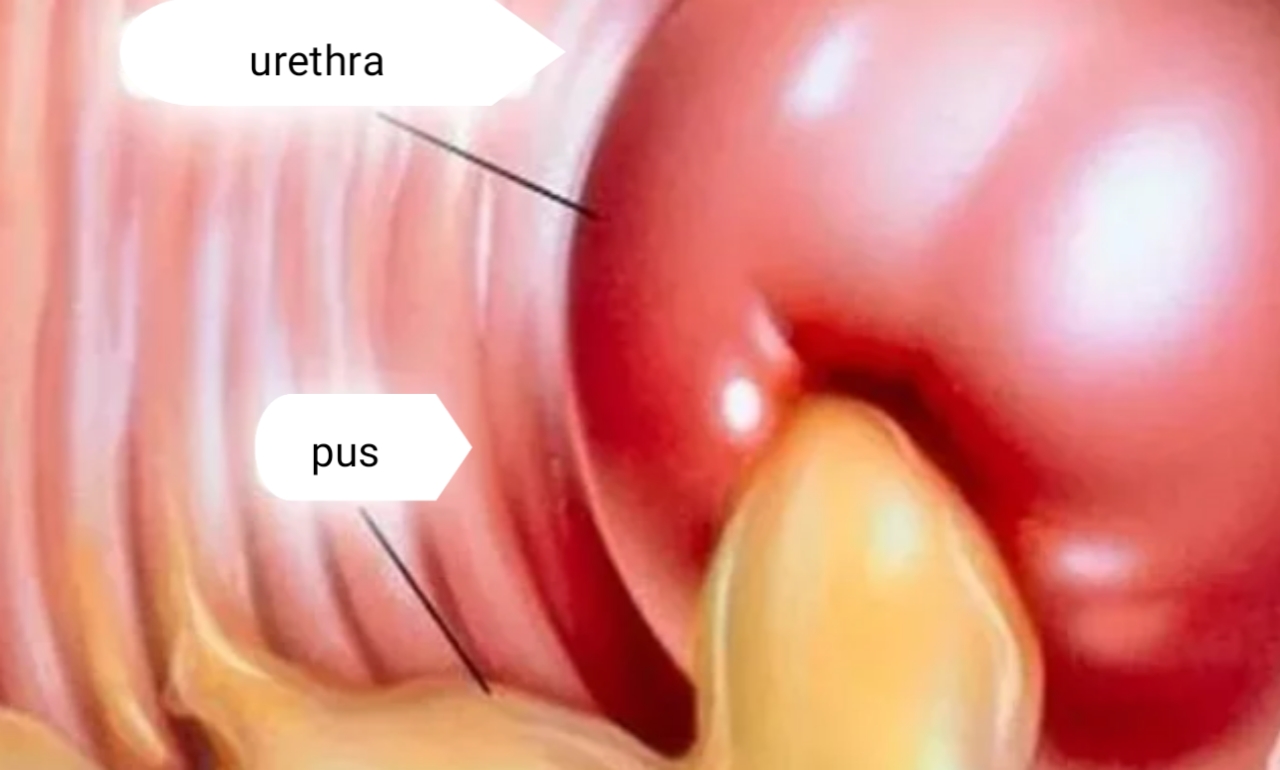
During this period, the patient can infect his partner without experiencing any unpleasant feelings. The incubation period of gonorrhea can last from one day to 3 weeks.
Gonorrhea is divided into fresh (up to two months), chronic (more than 2 months) and latent (asymptomatic) forms. The new form is sharp, semi-sharp and torpedo.
Acute Gonorrhea
Symptoms of Acute gonorrhea in woman rarely occurs. Q, accompanied by pain, itching, intermittent nausea, painful urination, fever. The vulva, uterus, urethra, and part of the rectum are usually damaged.
Redness and swelling of the mucous membranes of these organs, a large amount of foul-smelling mucous-purulent secretions are observed.
The mucous membrane is easily damaged, causing erosions. The surrounding skin is irritated. Inguinal lymph nodes may grow.
The cervix and cervical canal are involved in the inflammatory process. The urethra is damaged, its external hole widens, and pus is expelled when it is pressed.
Semi-acute Form
More semi-acute forms are found. All its symptoms are weaker than acute. However, weak edema and redness of the labia, urethra and uterus can be seen. Weak mucous-purulent secretion from the cervical canal.
Chronic Gonorrhea
It is usually diagnosed during exacerbation. In this form, most of the urethra is damaged, but urinary incontinence is rare. There may be edema and redness of the walls of the uterus.
The disease often manifests itself with a white-yellow spot on the underwear. Exacerbation is often associated with menstruation, during which bloody secretions may smell bad. The same effect can be caused by eating a violation of the diet – too fatty, fried, bitter, salty, acidic foods.
Most patients have rectal damage. It manifests itself in the stool with mucus and blood. Gonorrhea symptoms in a women are usually mild, so they rarely seek medical attention.
Women at high risk (those who change their sexual partners frequently) need diagnostic screening. Such women should be informed about the transmission of the disease, its dangers and treatment.
Complications
The main complications of gonorrhea are pelvioperitonitis and gonococcal infections of the musculoskeletal system (arthritis). Organs such as the heart, brain, lungs, and skin are less damaged. The prevalence of gonococcal infection has been described in the medical literature.
Another complication of gonorrhea is bartholinitis, an inflammation of the glands that open into the uterine tract. The disease manifests itself in the form of painful growths in the vulva.
The infection often shields the uterus, growths, and peritoneum. At this time, there may be chills, fever, severe abdominal pain, vomiting.
Blood-borne gonococcal infections are common in women. This can be caused by prolonged illness, menstruation, pregnancy, trauma to the cervix during various manipulations ( abortion, diagnostic pruritus, etc.).
There are two variants of widespread gonococcal infection. The first is lightning-shaped sepsis with tremors, fever, sweating, severe general condition, and skin and bone damage.
In the second case, the symptoms of intoxication are weak, the main manifestation of which is gonococcal arthritis.
However, in this variant, severe damage to the heart, brain and other organs can be observed.
When left untreated, gonorrhea can aggravate a woman’s general condition , lead to infertility, and can even lead to death if lightning sepsis develops. Therefore, this disease should be diagnosed in time as soon as it is suspected.
Diagnosis Of Gonorrhea
Gonorrhea causes symptoms typical of other infectious processes. Therefore, its main diagnostic method is microscopic examination of the smear from the urethra, uterus or cervical canal.
How To Take Ointment For Gonorrhea?
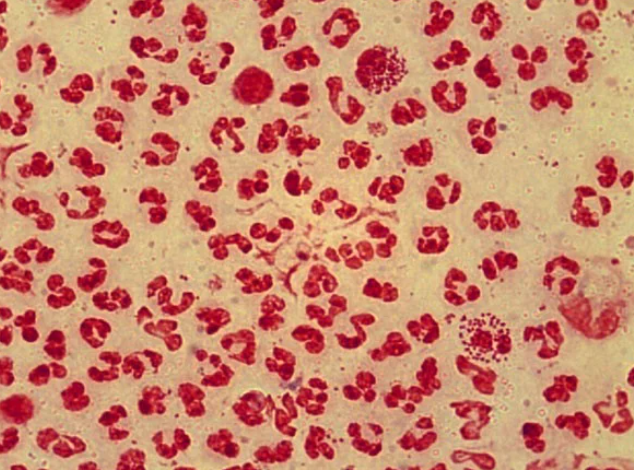
All antibiotics should be discontinued 4-5 days before the examination. Do not urinate for 3 hours before the test.
The secretion is removed with a special spatula and applied to the glass. It is treated with special dyes, dried, fixed and examined under a microscope.
A specific symptom that confirms the diagnosis of gonorrhea under the microscope – Gram-stained, coffee-like bean-shaped cells. This symptom is not present in all patients, but its presence is a sign of 100% gonorrhea.
Planting Method
If the diagnosis is doubtful, the secretion is cultured in a special nutrient medium. After transplanting, gonococci multiply there and are easily differentiated from other infectious agents.
Chain Polymerase Reaction – Pcr
In addition to smear microscopy and culture, antibodies to gonococci in the blood are often examined. This is called a chain polymerase reaction – PCR.
PCR has high accuracy. It allows the detection of gonococcal antigens in secretions from the urethra or cervical canal. The disadvantage of this method is the high cost and the need for a well-equipped laboratory.
Other laboratory tests for gonorrhea (immunofluorescence reaction, enzyme-linked immunosorbent assay, Bordeaux-Jangu reaction, etc.) are of secondary importance.
Express test shows the presence of the causative agent – gonococcus in the patient’s urine. However, its results are often not confirmed by other methods of examination. On the other hand, using only rapid tests can prevent the disease from being detected by mistake.
During the chronicity of the process, gonococci form resistant forms that penetrate deep into the mucous membrane. Chemicals, gonococcal vaccine, thermal, food provocation are used to activate them, or the test is performed during menstruation.
The sexual partner of a woman with gonorrhea is also examined. If the disease is chronic or latent, all of the woman’s partners in the last two months should be screened. If a sick woman looks after a child, they should also be examined.
Now that you are well-versed on Gonorrhea in women symptoms, diagnosis and cause, let’s begin learning about Treatment and how to protect against Gonorrhea.
Treatment Of Gonorrhea
Treatment of gonorrhea, which affects only the lower part of the urogenital tract (urethra, uterus, vulva, cervix), is usually carried out with antibiotics from the cephalosporin or fluoroquinolone group.
You May Also Like:
- Mucus In The Ear: Causes, Symptoms And Treatment
- Cervical Cancer: Definition, Symptoms, Diagnosis, Prevention and Treatment
- Uterus Infection: Symptoms, Causes and Treatment
- Vulvar Varicose Veins In Pregnancy – What’s it, Causes, Symptoms And Treatment
- Genital Herpes: Common Symptoms, Treatment And Prevention
Treatment of gonorrhea with ceftriaxone is one of the most common options. Ceftriaxone is an antibiotic from the cephalosporin group, which is given as a single intramuscular injection of 1000 mg in mild forms.
One of the effective tablets against gonorrhea is ciprofloxacin. It is usually enough to take 500 mg tablets once.
If the patient has gonorrhea and chlamydia at the same time, azithromycin is administered orally in a single dose of 1000 mg.
Amoxicillin and other penicillins are practically not used because they are often resistant to gonococci.
Given the possibility of co-occurrence of gonorrhea with syphilis, chlamydia and other venereal diseases, it is necessary to choose an antibiotic that is effective against all pathogens.
Treatment with antibiotics should be carried out only on prescription. Irrational antibiotic therapy can lead to chronic disease, complications, and sexually transmitted infections.
In chronic and latent forms of gonorrhea, a course of treatment with the gonococcal vaccine is given before antibiotics are prescribed to boost the immune response and remove the microorganisms from the protected state. After 6-10 injections of the vaccine, antibacterial therapy is carried out according to the usual scheme.
Complications of the disease are treated in an inpatient setting. For this purpose, intramuscular and intravenous antibiotics are administered. If necessary, resistance-enhancing agents, physiotherapy procedures, complement the treatment with surgical treatment (for example, in bartholinitis).
Treatment Of Gonorrhea In Pregnancy
Treatment of gonorrhea detected during pregnancy is necessary to prevent infection of the fetus at birth. For this purpose, drugs that have minimal effect on the fetus are used: Ceftriaxone, Azithromycin, Levomycetin. However, fluoroquinolones, such as ciprofloxacin, are contraindicated in pregnant women. These patients should be treated in an inpatient setting.
Outcomes Of Treatment
Its effectiveness is evaluated 10 days after the end of treatment. For this purpose, a smear is taken for analysis. The same examination is repeated after the next menstruation. This helps to rule out chronic forms. When complete recovery is suspected, the secretion is replanted, the susceptibility of the microbes to antibiotics is determined, and the course of treatment is repeated.
Conditions for increasing the effectiveness of treatment include:
- strict fulfillment of the doctor’s appointment;
- abstinence from sexual intercourse during treatment;
- examination of sexual partners;
- treatment of other venereal diseases.
How To Protect Against Gonorrhea

To prevent this unpleasant disease, it is necessary to follow the rules of sexual hygiene, use condoms during sex (barrier contraception), be faithful to your spouse.
General towels, clothes and other hygiene items should not be used to prevent household infection among family members.
This Article is an Intellectual Property of Myhealthmyskin.com.ng
If you want to read more articles similar to Gonorrhea In Women Symptoms, Diagnosis, Prevention And Treatment? We recommend you visit our Women’s Health category. Share on your social networks and stay tuned for upcoming articles.
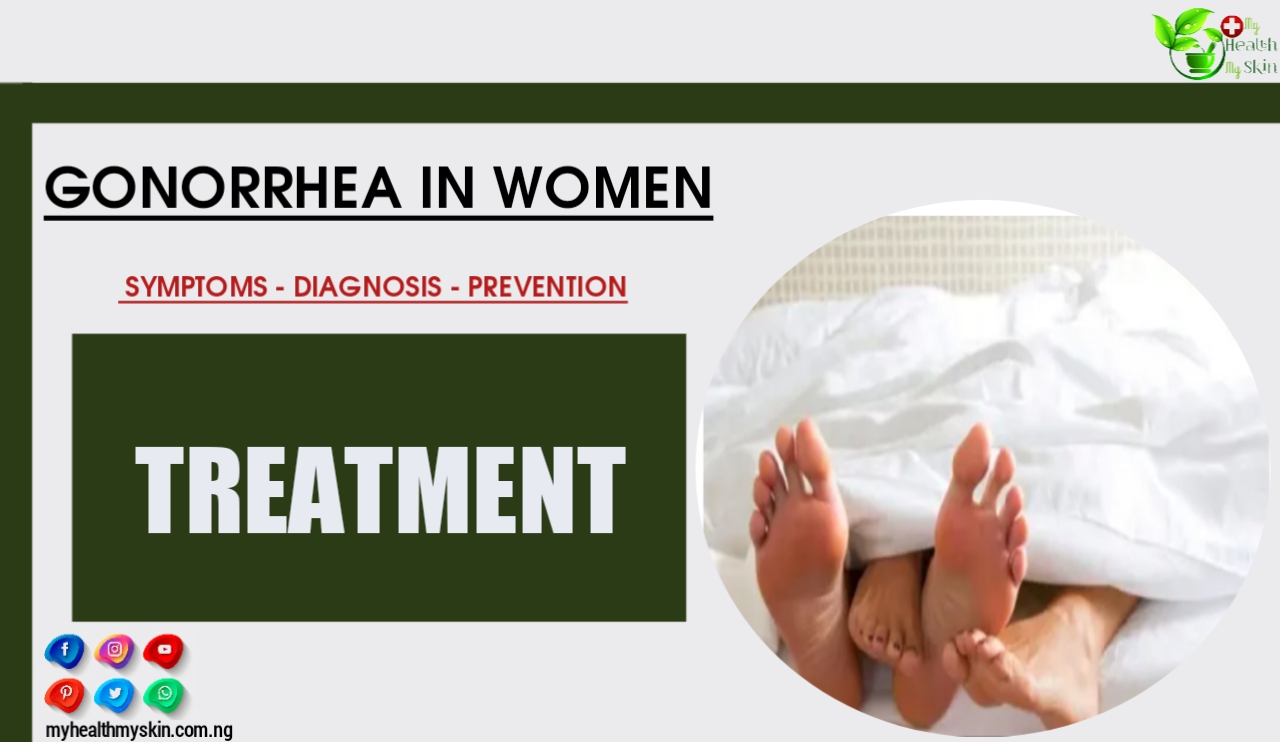
Have You Ever Heard That Gonorrhea Is Curable? Do You Know Someone Who Has Contracted This Std? Comment Below!

